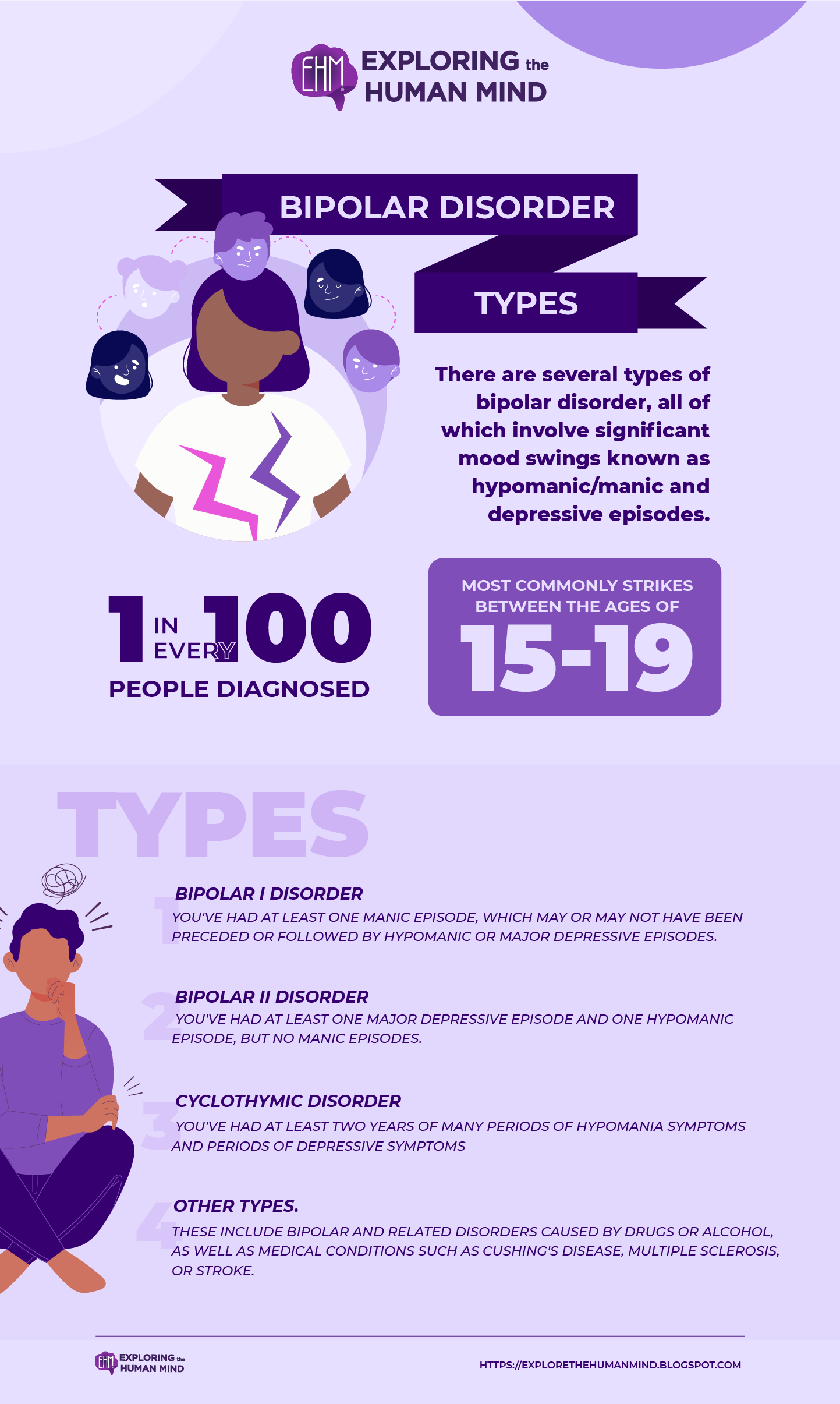Bipolar Disorder Types
There are several types of bipolar disorder, all of which involve significant mood swings known as hypomanic/manic and depressive episodes. People with bipolar disorder, on the other hand, are not always in a hypomanic/manic or depressive state. They also have periods of normal mood, referred to as euthymia.
- Bipolar I disorder: You've had at least one manic episode, which may or may not have been preceded or followed by hypomanic or major depressive episodes. Mania can cause a break from reality (psychosis) in some people.
- Bipolar II disorder: You've had at least one major depressive episode and one hypomanic episode, but no manic episodes.
- Cyclothymic disorder: You've had at least two years of many periods of hypomania symptoms and periods of depressive symptoms (though less severe than major depression) (or one year in children and teenagers).
- Other types: These include bipolar and related disorders caused by drugs or alcohol, as well as medical conditions such as Cushing's disease, multiple sclerosis, or stroke.
Bipolar disorder is fairly common, with approximately one in every 100 people being diagnosed at some point in their lives, and can strike at any age, but it most commonly strikes between the ages of 15 and 19. Bipolar disorder affects men and women of all backgrounds equally. In bipolar disorder, the pattern of mood swings varies greatly. Some people, for example, have only a few bipolar episodes in their lifetime and are stable in between, whereas others have many episodes.
Although bipolar disorder is an ongoing condition, you can control your mood swings and other symptoms by adhering to a treatment plan. Bipolar disorder is typically treated with medications and psychological counselling (psychotherapy).
Consult your doctor or a mental health professional if you are experiencing symptoms of depression or mania. Bipolar disorder does not improve on its own. Getting treatment from a mental health professional who is familiar with bipolar disorder can help you control your symptoms.

vectors by Freepick; graphic design by Vadot
Reference:
Bipolar disorder - Symptoms and causes. (2022). Mayo Clinic; https://www.mayoclinic.org/diseases-conditions/bipolar-disorder/symptoms-causes/syc-20355955
NHS Choices. (2023). Overview - Bipolar disorder. https://www.nhs.uk/mental-health/conditions/bipolar-disorder/overview/
Clinic, C. (2022). Bipolar Disorder (Manic Depression): Symptoms & Treatment - Cleveland Clinic. Cleveland Clinic. https://my.clevelandclinic.org/health/diseases/9294-bipolar-disorder






Comments
Post a Comment